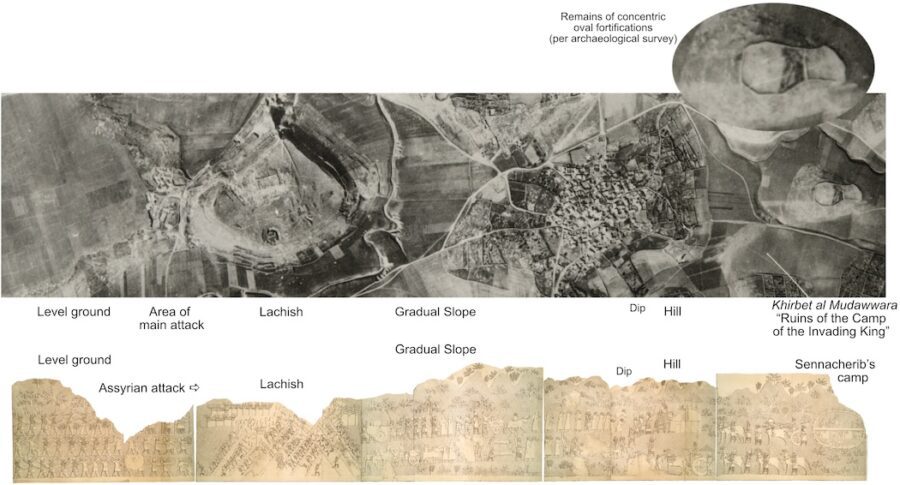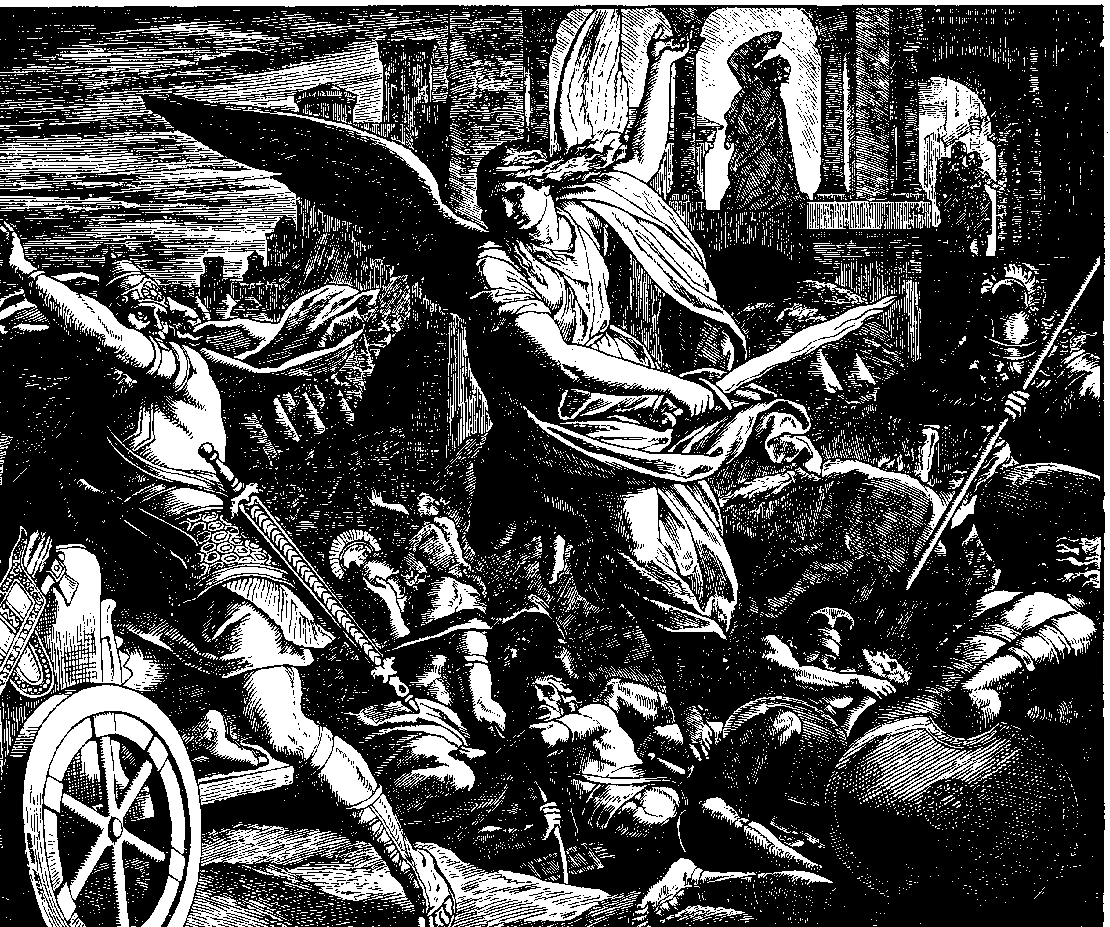Researchers have discovered a battle scene carved into the stone walls of the Assyrian King Sennacherib’s palace commemorating his conquest of Lachish, a city to the south of Jerusalem. Using early aerial photographs of Lachish before modern development, archaeologist Stephen Compton matched the landscape as depicted on the palace walls in Mosul, Iraq, to features of the actual landscape located in Lachish, 42 miles south of Jerusalem. The research referenced aerial photos of the site in 1910 before it was built up.

Stone panels commemorating the conquest of Lachish from the walls of the Assyrian Emperor Sennacherib’s palace show his military camp. The twenty-four guard towers in the camp’s perimeter wall, each with three windows visible, indicate a substantial fortification. S. C. Compton
Using the carving as a guide, researchers found ruins similar in size and shape to the camp in Sennacherib’s relief.
‘Roman military camps were always rectangular, whereas this was oval, the characteristic shape of Assyrian camps,’ Compton wrote in a press release.
Before Compton discovered the Assyrian site, researchers had only encountered one other ancient military campsite in the area.
An archaeological survey of the site found no evidence of human habitation for 2600 years, followed by pottery sherds from the exact time of Sennacherib’s invasion of Lachish, after which it was again abandoned for centuries.

Bottom: The entire scene from Sennacherib’s palace wall as drawn by its excavator, Austen Henry Layard, in 1849. Top: The same landscape as photographed from a plane in 1945, prior to modern alterations to the landscape. Correlating the two indicated a likely location for the ruins of Sennacherib’s camp. Created from two public domain images: Austen Henry Layard’s 1849 excavation drawings of the Lachish relief and a 1945 aerial photograph taken as part of a mapping effort by the British Mandate government of Palestine.
The Assyrian Empire existed from 1365 to 609 BCE. King Sennacherib ruled from 705 to 681 BCE and carried out a military campaign to control all routes across the Syrian Desert that led to the Mediterranean Sea.
It should be noted that the ancient Arabic name for the ruins was Khirbet al Mudawwara, “The Ruins of the Camp of the Invading Ruler.”
Researchers believe the site was Sennacherib’s camp from the siege of Jerusalem 2,700 years ago, which is featured in the three books of the Bible: 2 Kings 19:35, 2 Chronicles 32:21, and Isaiah 37:36-38. Isaiah 10:24-32 describes the Assyrian advance toward Jerusalem, culminating with them stopping at Nob and challenging Jerusalem from there. This connects the Assyrian camp at Jerusalem with Nob, the lost priestly city that held the tabernacle, the holiest site in Judaism prior to the construction of the temple. However, according 1 Samuel 21-22, after the priests there aided the hero David, King Saul had every man, woman, child, and animal in Nob killed. Nob was not mentioned again for some 300 years, until the Assyrians occupied it. The Biblical accounts describe King Hezekiah praying to God for salvation. God sent an angel to kill 185,000 Assyrian soldiers in one night, forcing Sencharib to retreat.

The earliest aerial photograph of Jerusalem (lower left) with an oval fortification visible on a hill in the upper right. Public Domain, from the collection of the Library of Congress.
The recent research is the first evidence that the battle actually took place. Researchers hope to use similar methods to uncover similar military bases and other ancient cities destroyed by the Assyrian Empire.
“In some cases, it has also been possible to use the newly discovered camps to locate the sites of ancient cities that were known to have been besieged by the Assyrians but whose locations were unknown or uncertain,” Compton said.




